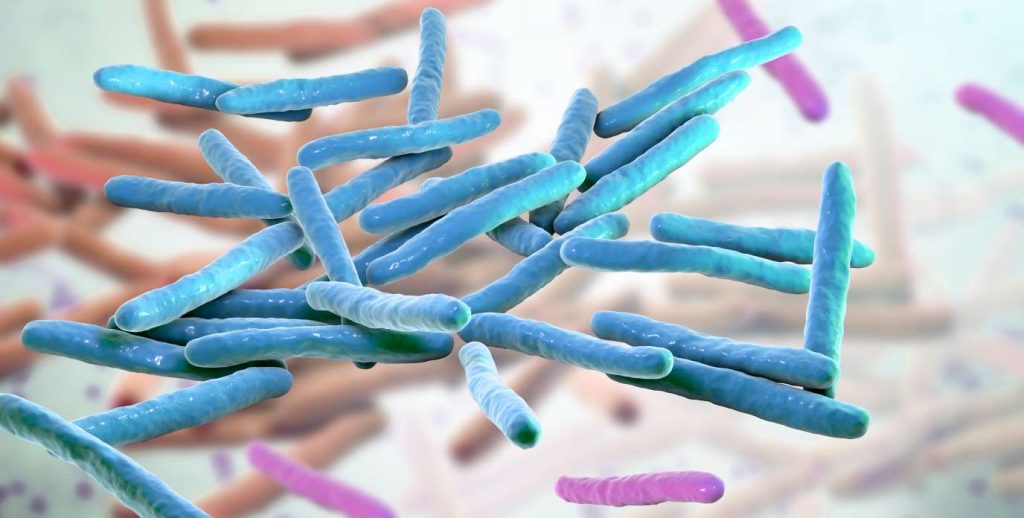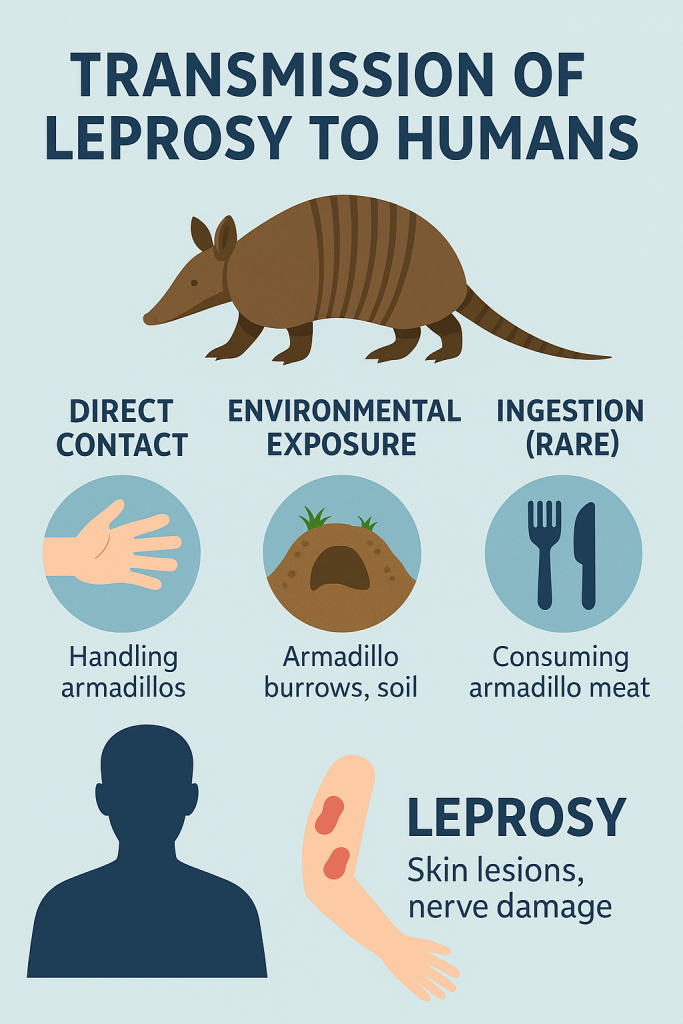ArmadilloTrapper.com dives deep into the zoonotic journey of Mycobacterium leprae—the bacterium behind Hansen’s disease (leprosy)
Armadillos and Hansen’s disease in Florida, “Leprosy in Armadillos”
1. What Is Zoonotic Leprosy?
- Definition: Zoonosis occurs when a disease normally found in animals jumps to humans.
- Leprosy-causing organisms: Mainly M. leprae, occasionally M. lepromatosis health.wusf.usf.edu+15epi.ufl.edu+15journals.plos.org+15.
- Natural animal reservoir: Apart from humans, the nine‑banded armadillo (Dasypus novemcinctus) is the only common wild mammal known to harbor M. leprae consistently phoenix.aaacwildliferemoval.com+13en.wikipedia.org+13journals.plos.org+13.
2. Armadillos: A Perfect Host
- Why armadillos? Their low body temperature (~34 °C) provides an ideal environment for M. leprae to thrive, especially in cooler skin areas pmc.ncbi.nlm.nih.gov+15en.wikipedia.org+15journals.plos.org+15.
- Prevalence: Studies show up to 16–20% of wild nine‑banded armadillos in regions like Florida carry M. leprae en.wikipedia.org+12kffhealthnews.org+12pmc.ncbi.nlm.nih.gov+12.

3. Rising Leprosy in Armadillos in Florida: The Facts
- Unusual spike: Florida reported over 176 cases from 2011–2020, a sharp increase compared to earlier years news.miami.edu+6pmc.ncbi.nlm.nih.gov+6dailymontanan.com+6.
- Geographic hotspot: Central Florida counties like Brevard are accounting for a disproportionately high number of domestic infections dailymontanan.com+1istockphoto.com+1.
- Zoonotic suspicion: Investigations attribute this rise to armadillo exposure, both direct and via soil contamination youtube.com+15health.wusf.usf.edu+15dailymontanan.com+15.

4. Transmission Pathways
| Transmission Route | Description |
|---|---|
| Direct contact | Skin-to-armadillo contact or handling carcasses en.wikipedia.org+10journals.plos.org+10kffhealthnews.org+10 |
| Environmental exposure | Armadillo burrows may contain M. leprae, contaminating soil or dust |
| Ingestion (rare) | Consuming undercooked armadillo meat; documented mainly in Brazil |
- Low human risk: Most people (95%) have natural resistance; close, prolonged contact is usually required epi.ufl.edu+15en.wikipedia.org+15phoenix.aaacwildliferemoval.com+15.
- Incubation: Often 9 months to 20 years—making exposure tracing difficult en.wikipedia.org.
5. Armadillos and Hansen’s disease in Florida, Evidence from Florida & the Southeast
- Necropsy labs: UF veterinarians are testing armadillo roadkill to track M. leprae prevalence pmc.ncbi.nlm.nih.gov+15health.wusf.usf.edu+15kffhealthnews.org+15.
- Clinical case reviews: Georgia clinics (1997–2022) found frequent outdoor activity and armadillo contact among patients wwwnc.cdc.gov+1kffhealthnews.org+1.
- Southeastern distribution: Armadillo-associated M. leprae genotypes have been found in U.S. patients .
6. Prevention: Stay Safe
- Never handle wild armadillos, especially bare-handed or deceased ones.
- Avoid digging or reaching into burrows—use gloves and tools.
- Cook armadillo meat thoroughly—don’t consume raw liver or blood.
- Consult your doctor if experiencing leprosy symptoms (skin patches, nerve numbness) and exposure history.
7. Leprosy Symptoms and Treatment
- Clinical signs: Pale or red skin patches, loss of sensation, muscle weakness leprosyreview.org+4en.wikipedia.org+4phoenix.aaacwildliferemoval.com+4phoenix.aaacwildliferemoval.com+2en.wikipedia.org+2en.wikipedia.org+2istockphoto.com+2phoenix.aaacwildliferemoval.com+2en.wikipedia.org+2en.wikipedia.org+1phoenix.aaacwildliferemoval.com+1.
- Diagnosis: Based on skin evaluations, nerve exams, and sometimes PCR testing.
- Treatment: Multi‑drug therapy (rifampicin, dapsone, clofazimine) for 6–12 months; highly effective pmc.ncbi.nlm.nih.gov+14en.wikipedia.org+14en.wikipedia.org+14.
- Public health: Free treatment is available, and transmission risk after treatment begins is very low.
8. Why This Matters: The Bigger Picture
- Epidemiology: Zoonotic transmission transforms our understanding of leprosy’s persistence in non-endemic regions.
- Research insights: Working with armadillos has advanced M. leprae research, including drug and vaccine development dailymirror.lk+15en.wikipedia.org+15pmc.ncbi.nlm.nih.gov+15phoenix.aaacwildliferemoval.com+3en.wikipedia.org+3journals.plos.org+3.
- One Health approach: Integrating wildlife behavior, microbiology, and human health helps track and mitigate zoonotic threats.
🔍 Infographic Highlights (concept summary)
- Prevalence: ~16–20% of armadillos in Florida carry M. leprae
- Transmission routes:
- Handling armadillos (direct contact)
- Environmental exposure (burrows, soil)
- Rare ingestion (meat)
- Status: 95% of humans naturally immune
- Symptoms: Skin lesions, sensory loss; onset: months to decades
- Treatment: Multi‑drug therapy, free through public health programs
9. Summary & Takeaways
Armadillos are unique because:
- They are the only common wild mammal known to sustain M. leprae.
- They play a key role in the re-emergence of autochthonous leprosy cases in parts of the U.S., especially Florida.
- While risks are low, informed precautions around wildlife can prevent infection and protect public health.
By combining scientific insight, clinical evidence, and public health awareness, ArmadilloTrapper.com aims to deliver the most authoritative resource on armadillo-associated leprosy. Bookmark this guide, share it, and help us improve wildlife-human safety.
For citations, go deeper into each study referenced above.
